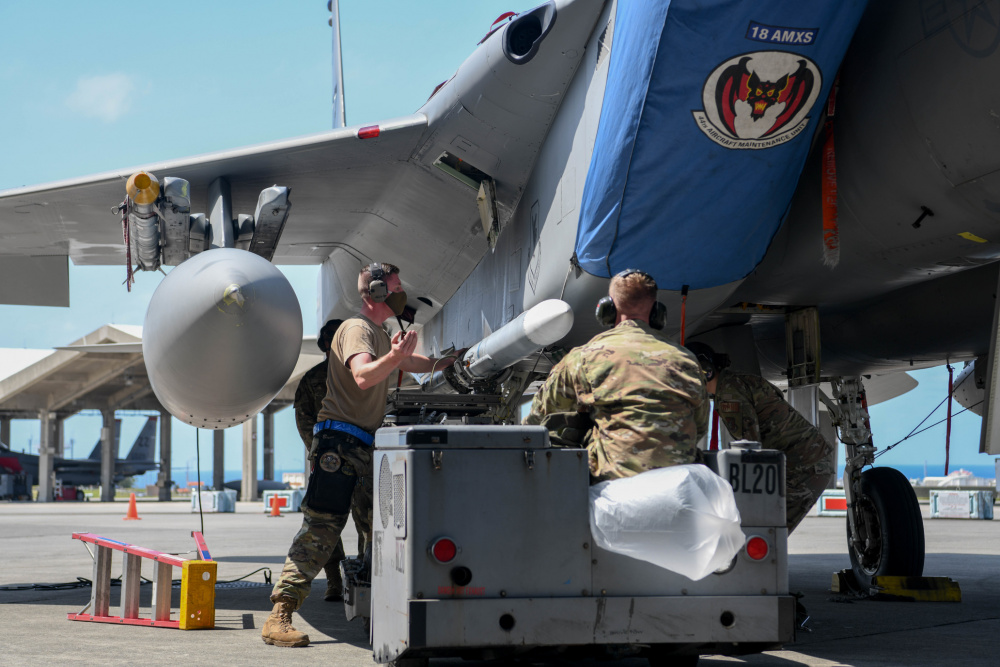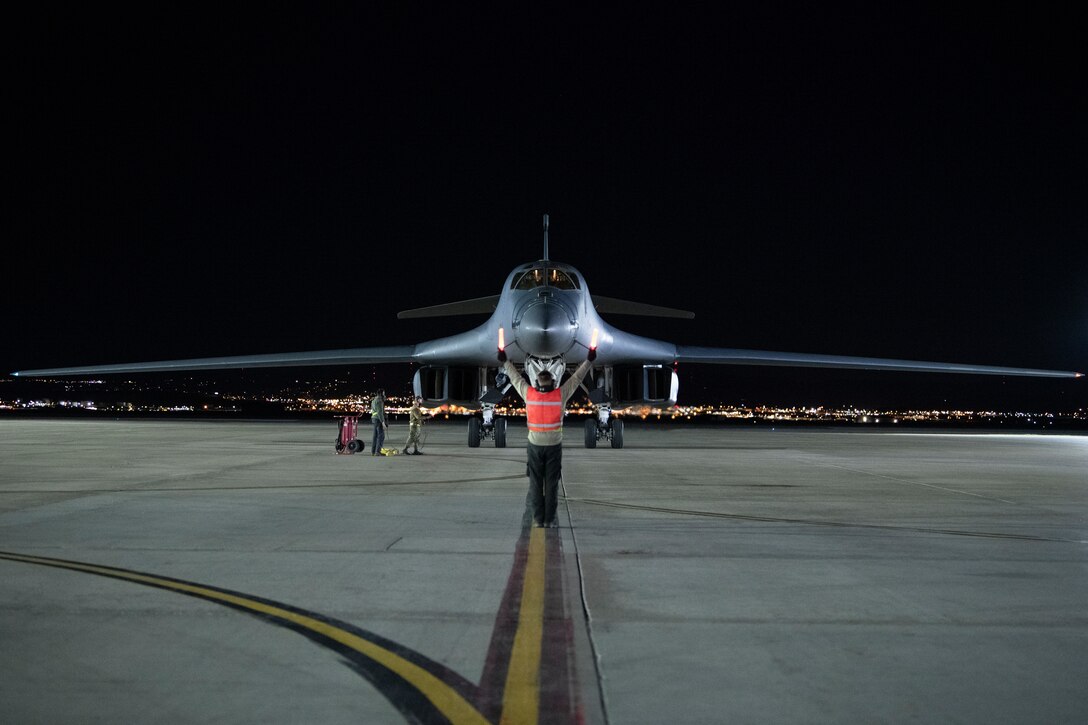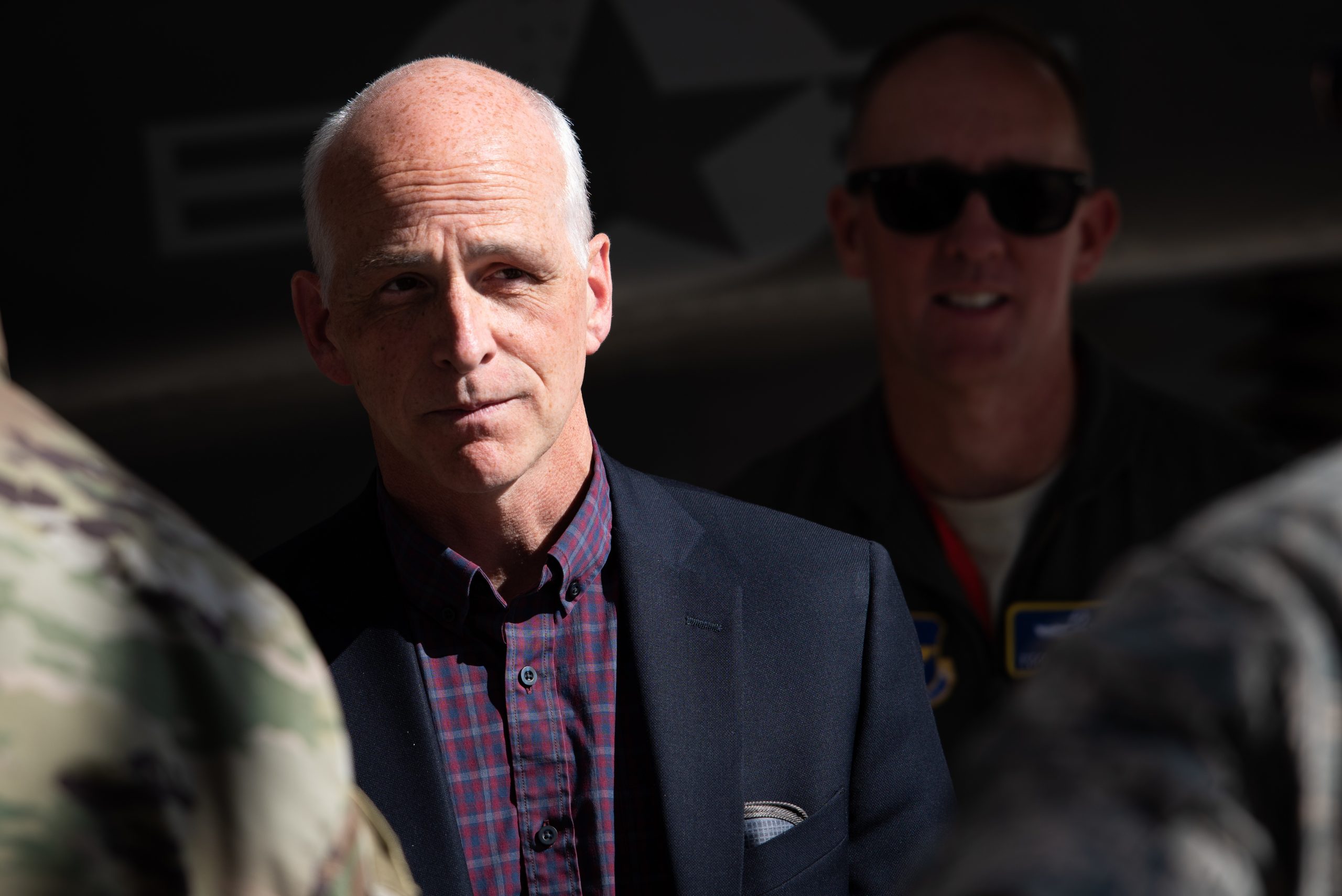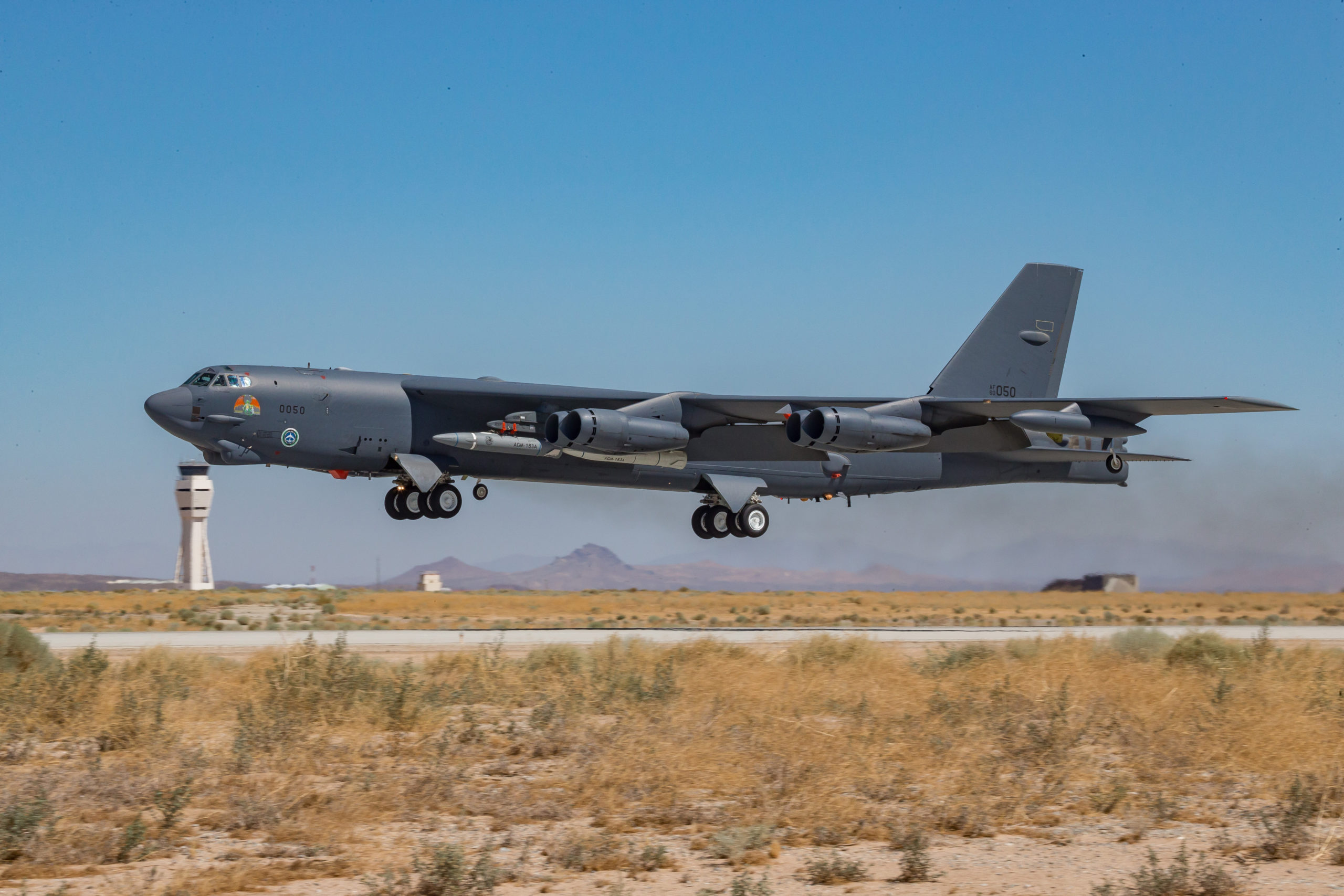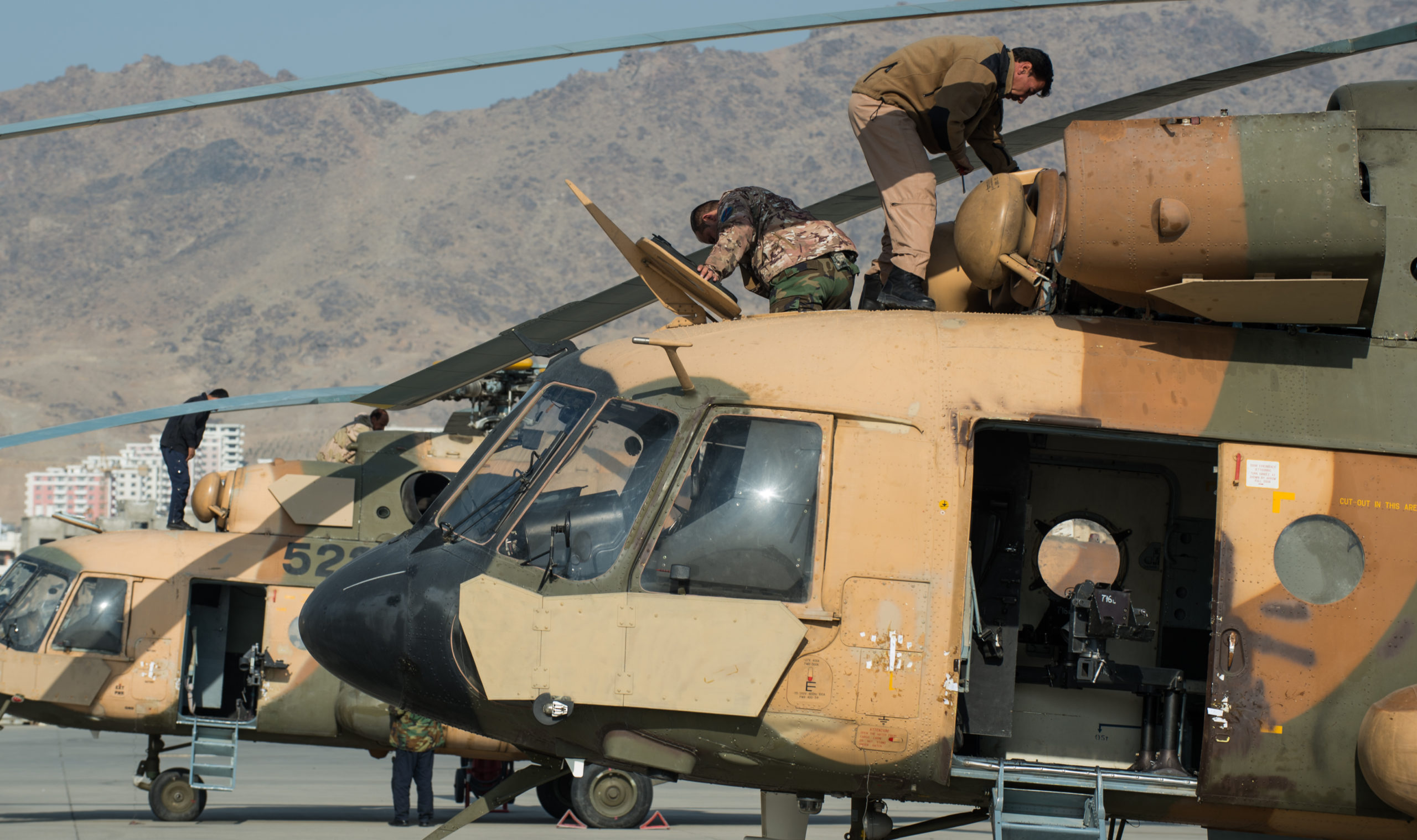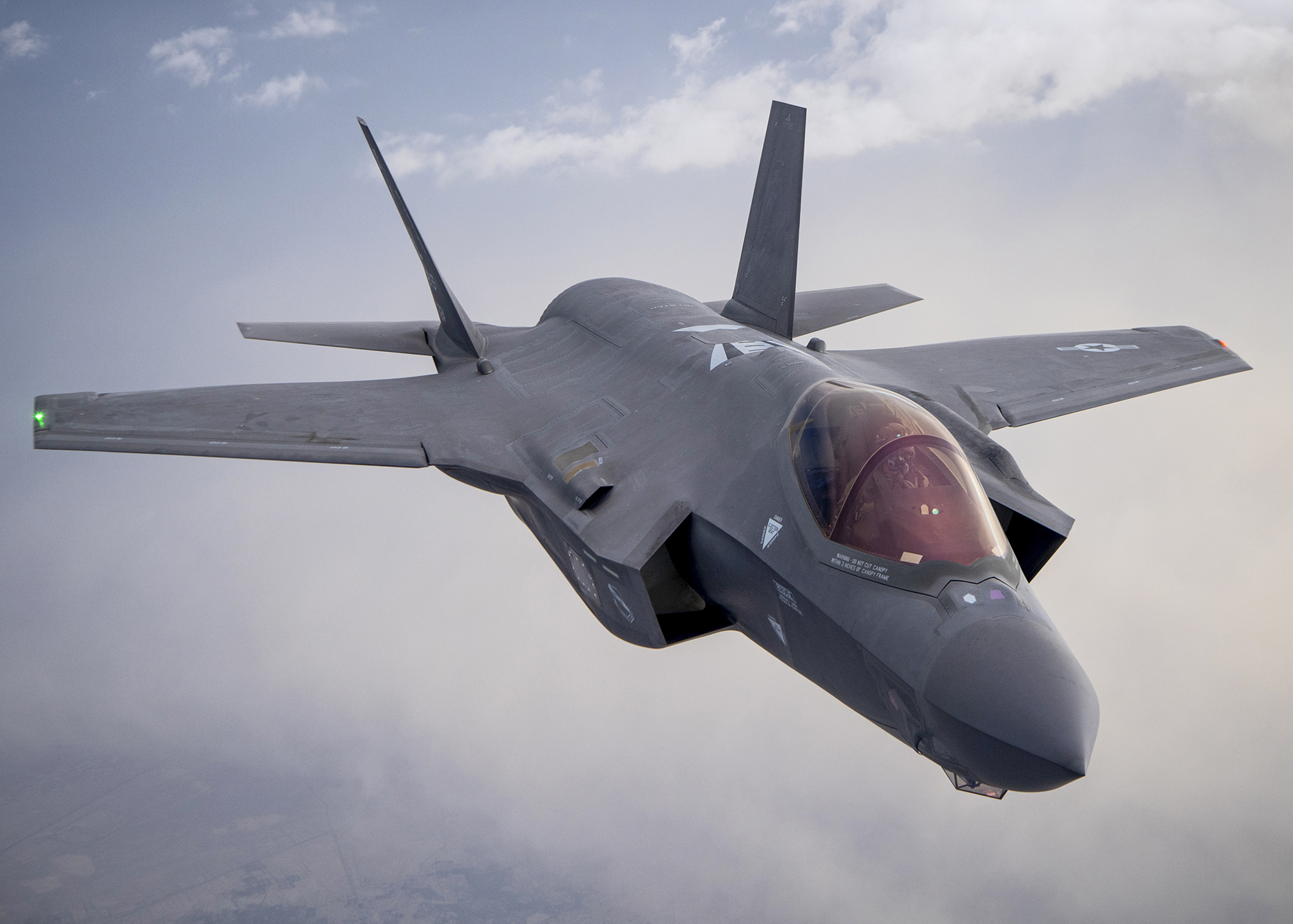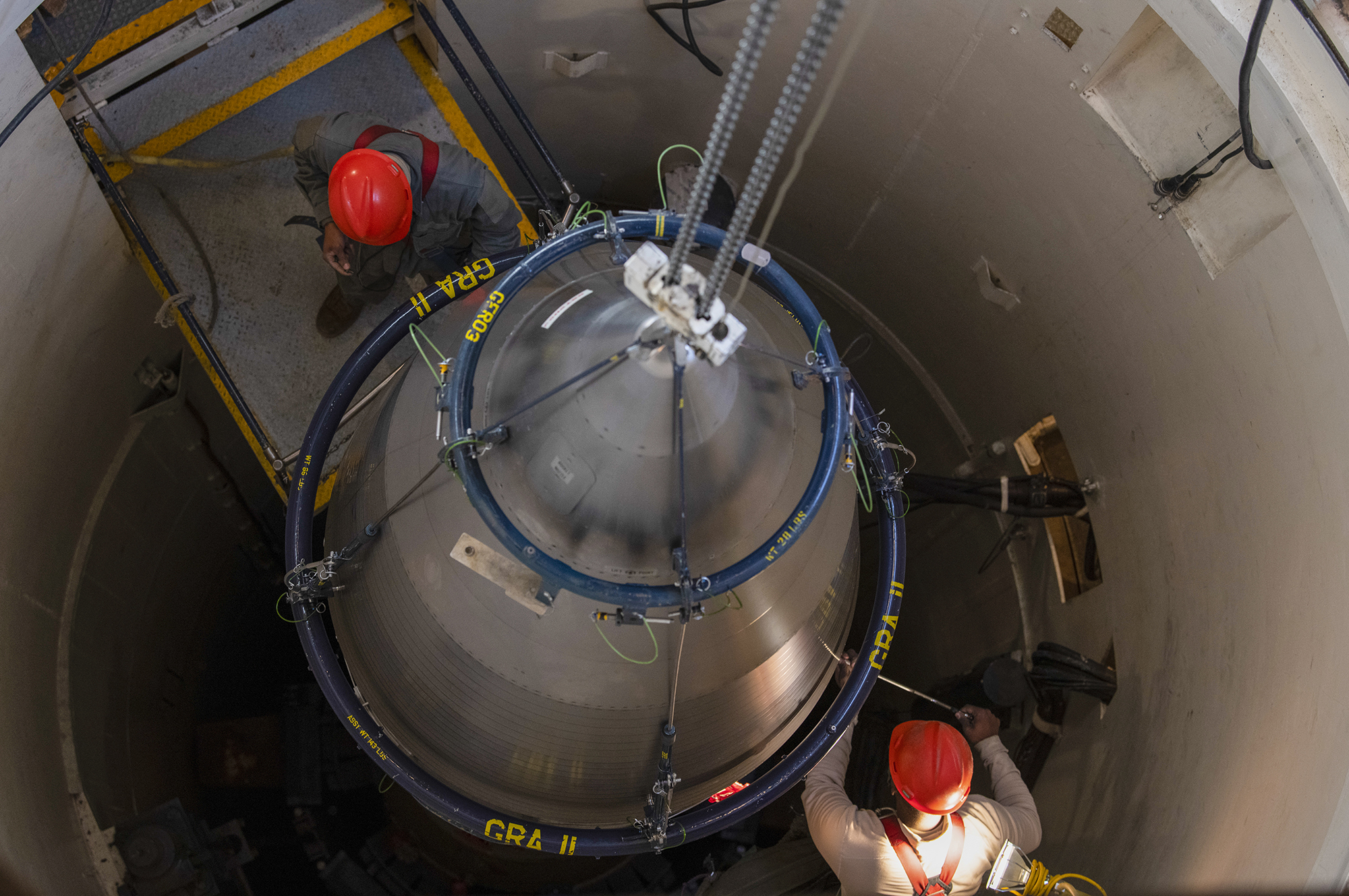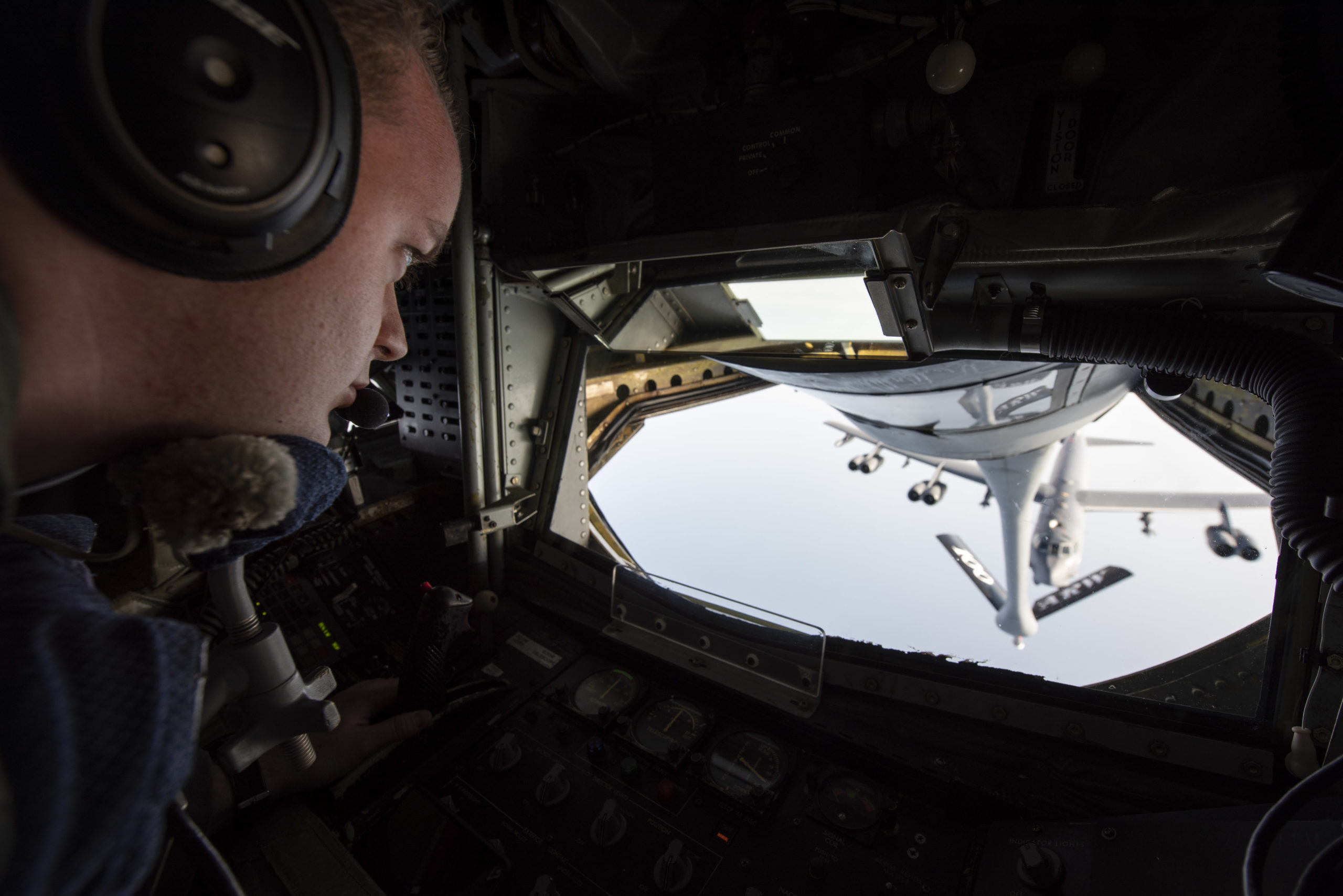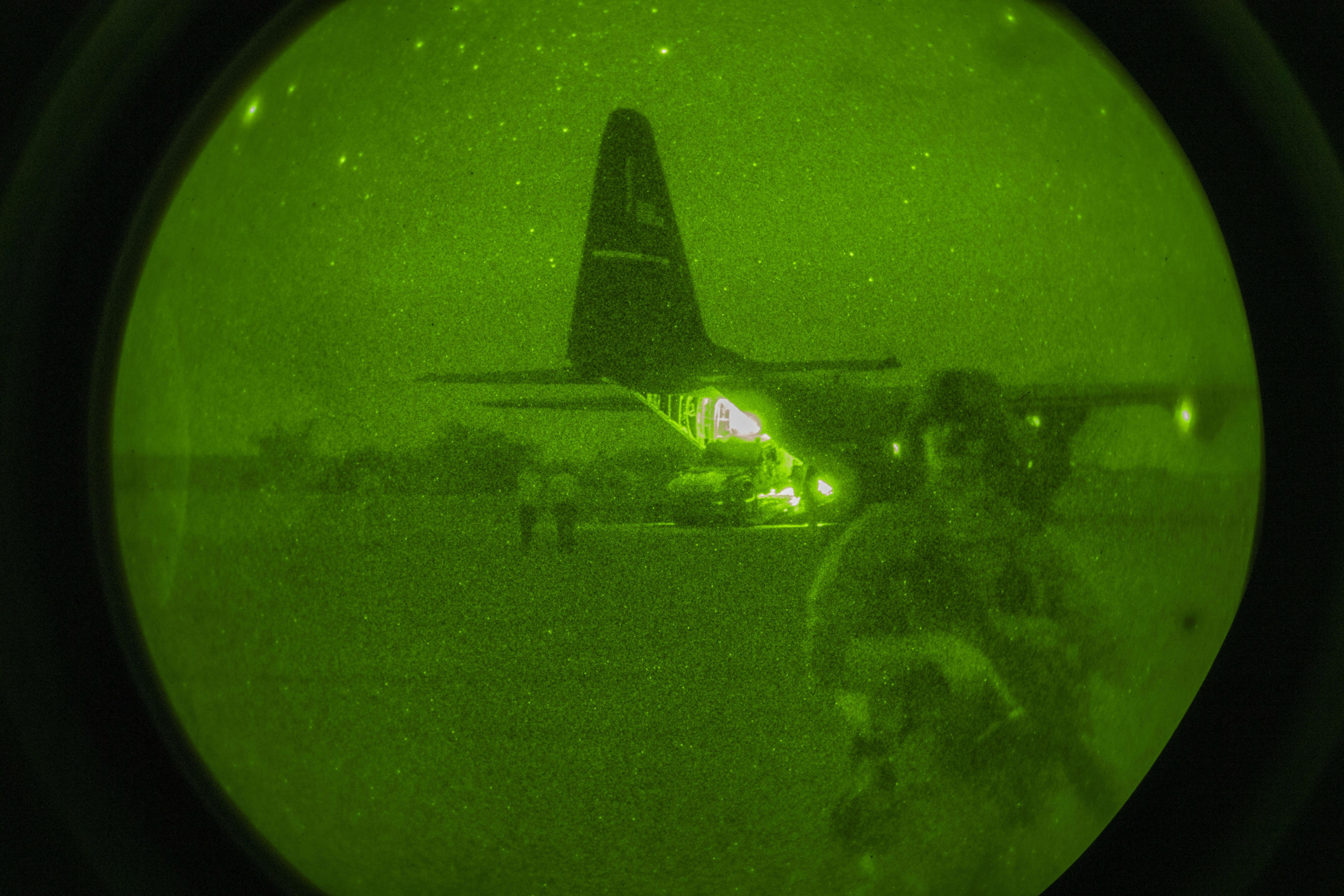When Col. William F. Ray became commander of 18th Maintenance Group in July 2019, the unit was struggling to produce just a light day of sorties for an F-15C/D fighter squadron. It was so bad that the operators had officially requested that some pilots be moved back to the United States from Kadena Air Base in Japan, “to an organization that could fly them better.”
Just 16 months later, the unit pulled off a “super surge,” putting up 436 sorties in three and a half days. That’s the equivalent of more than a month’s worth of flying condensed into less than a week, said Capt. David Barton, operations officer for 18th Aircraft Maintenance Squadron.
“It was considered an unsolvable problem,” Ray explained in a phone interview with Air Force Magazine. Now, with the same aging fleet, modifications, and other issues, “we’re putting up the most [F-15C/D] sorties in the Air Force.”
The key to their success: The theory of constraints.
The theory, introduced in a 1984 book by Eliyahu Goldratt, is a really a mindset shift, said Master Sgt. Derrick Brooke, continuous process improvement program manager for 18th MXG.
“What theory of constraints does is, it gives your managers or supervisors and even your Airmen … a way to look at their processes, the things they’re doing on a daily basis” and identify what is making that work harder, Brooke said. Then, instead of eliminating the constraints, they use them to determine how many jobs to do at once, “so that we don’t spread our resources thin, and so that we don’t crush the quality of life for our Airmen.”
The Air Force had begun implementing the theory across the service by sending consultants to bases to train Airmen on the concept, identify constraints, and work to create solutions. But the maintainers in Okinawa didn’t want to wait for the consultants—who just this month arrived at Kadena, the first overseas base to host them. Instead, Maj. Alex Pagano, now the commander of the 353rd Aircraft Maintenance Squadron but previously with 18th AMXS, and others put together a three-day course to teach the theory, and then implemented it.
Brooke came from Fairchild Air Force Base, Wash., which was the first maintenance group in the Air Force to test the theory of constraints, he said. The consultants came out to Washington and the unit “had a lot of success, but that took six months. … So when I [moved] out here in October, I was extremely impressed to see the equal or greater amount of success” the 18th Maintenance Group was having, based on just a three-day course, Brooke said.
Besides significantly reducing the amount of time it took to turn aircraft around on the ground—Pagano said it used to take about 90 minutes to get 24 aircraft from landing to take off again, and now it takes closer to 50 minutes—implementing the theory has also allowed the group to create “whitespace on the calendar” for Airmen, Ray said.
Previously, it was understood that if an Airman was on the weekend duty schedule, she or he would definitely be working weekend duty. Now, Ray said, “We’re going weeks and months without working weekend duty.” Additionally, 12-hour shifts used to be the norm, and that has been reduced down to nine-hour days, he said.
They’ve also implemented a program where Airmen can occasionally take time on a Friday to do self-care or take classes like yoga, dorm room cooking, or investment, Ray said. “That’s unprecedented in maintenance, for us to be thinking about … a program that takes care of Airmen. We typically are taking care of planes and that’s it. We have our hands full with that, and so we’re using theory of constraints to build better processes, so that we can build better Airmen.”
A day in the life of a typical maintainer a few years ago, Barton said, was “trying to produce as many sorties as you can, and most of those aircraft coming back really broken … just throwing people and resources, essentially shot-gunning people and parts at the flightline to fix that.”
And whereas their previous approach to talent management could be described as “jerking [maintainers] around from aircraft to aircraft as priorities shifted,” theory of constraints has allowed them “to set deliberate priorities, prioritize those, and resource people and equipment to that aircraft, and what that translates into from a quality of life perspective is stability for the Airmen,” Barton explained.
One of the “cornerstones” of theory of constraints is “focus and finish,” Ray said. “So we put you on a job, we want you to focus on that job, we’re not gonna pull you off that job until you’re finished … that simple little shift right there creates stability and peace of mind for that Airman.”
Senior Master Sgt. Felipe Mendoza, 18th Component Maintenance Squadron flight chief for the propulsion flight, said it translates to slowing down the workflow in order to speed up the workflow. “When I got down here, we were working a lot of engines, we were working eight to nine engines just to really produce one engine,” he explained. Now, they’ve cut down on the number of engines they work on at once, which has resulted in an increase in engine production.
The “white space” Ray mentioned has also allowed the 44th Aircraft Maintenance Unit, part of the 18th AMXS, to work on creating multi-capable Airmen, explained 1st Lt. Emily Taylor, 44th AMU’s officer in charge. The unit began building a 15-person cell in January, with the goal of getting them qualified “on everything that an Airman can do to generate an aircraft.” So far, all 15 are qualified on generating and launching aircraft, Taylor said, and “we’re also working on getting our weapons crews capable of actually loading these aircraft and getting them ready for a wartime scenario.”
That type of scenario is a major focus in the Indo-Pacific, but the unit is also sharing what they’ve learned with others across the service. They created an education program to help other units implement the theory, and traveled to Mountain Home Air Force Base, Idaho, to assist. The Goldratt consultants have been to Fairchild; Shaw Air Force Base, S.C.; and Ellsworth Air Force Base, S.D.
“One leadership philosophy we had from the beginning was, define what ‘done’ looks like,” Pagano said. They determined that “done” would not be when the unit was finished implementing theory of constraints, but when “every organization in the Air Force” has implemented it.
“We live in a volatile, uncertain, chaotic world. And so, instead of having an organization that just reacts to that, we wanted to have an organization that takes it, and is able to absorb it and respond to it immediately, And so, by implementing theory of constraints and then creating this team, helps us to operate effectively in that volatile, uncertain, and chaotic operating environment that we live in every day,” he added.
